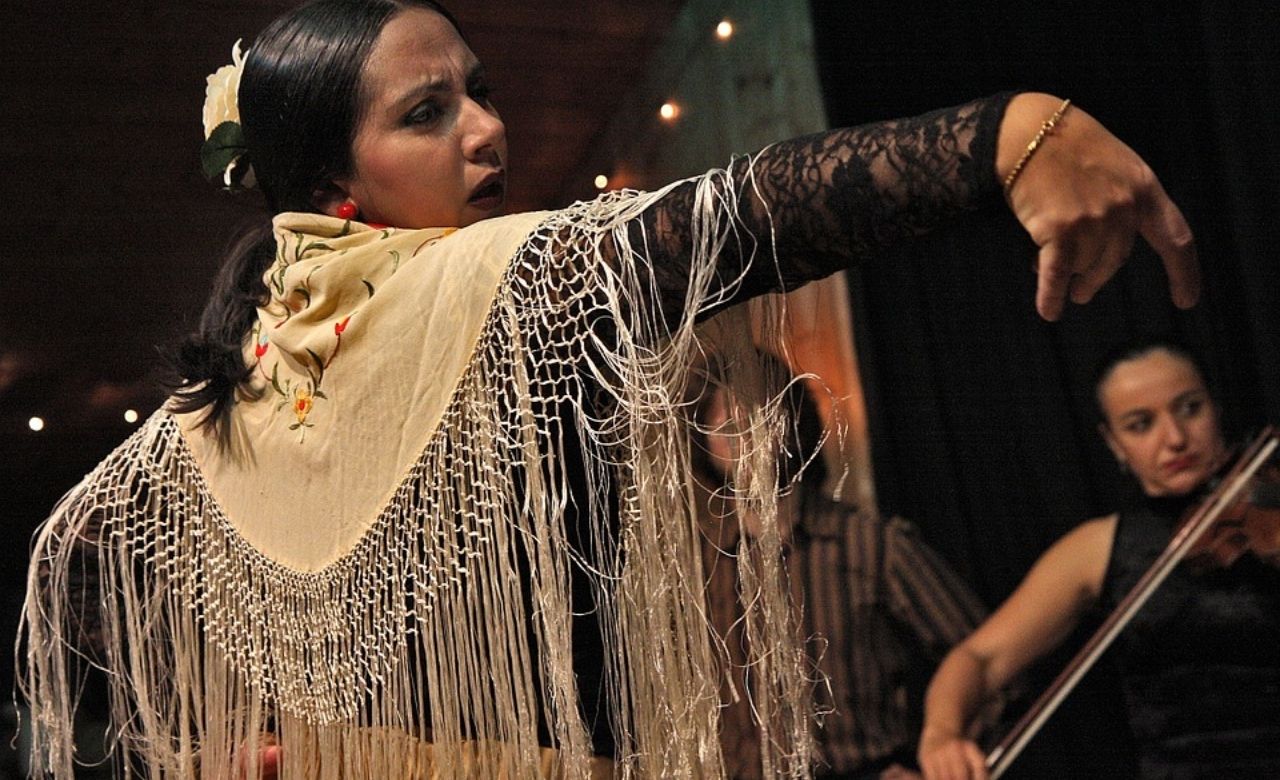
If there is one unique type of dance credit a seasoned dancer would love to learn and perform, it would be Flamenco.
The Flamenco dance, also known as baile, is a unique dancing style that originated in Spain that is highly expressive in form. This cultural dance features a solo dancer showcasing various steps and movements like hand-clapping, detailed hand and body gestures, and impressive percussive footwork. In a Flamenco dance, the dancer shows off her moves while a singer performs along with a guitar player.
Flamenco Technique
One can easily distinguish a Flamenco dance from other types of dances such as Irish dance, ballet, hip-hop, or ballroom. Dancing flamenco usually features a degree of grandness in movements and music. It has big arm movements paired with the stomping of feet that work along with the rhythm of the music. It takes an expert to dance flamenco seamlessly and effortlessly. One has to have a great deal of dedication in learning its origins, its intricate and sweeping hand and body movements, and the discipline that comes with learning from it.
The dance has roots in diverse races. Flamenco has origins in India, Arabia, and Spain but follows no specific flamenco dance. Flamenco dancers rely on the rhythmic patterns of the song when it comes to performing their dances. It serves as their guide, depending on the tradition of the song accompanying the dance. Through an audience’s eyes, one can see witness how a dancer expresses his/her expression which shifts from one emotion to the other throughout the whole flamenco performance. It takes the audiences on to roller-coaster ride of facial expressions and sweeping movements that indeed hooks every viewer’s attention.

Origins of the Dance
The origins of flamenco can be dated back to the old times of Southern Spain in the Andalusian region which was linked with the Roma or gypsy group. The Roma, or also known as Gitanos, are linked to the formation of the flamenco dance. They migrated from the northwest of India from the 9th to 14th centuries and went to Spain to settle. Gitanos are associated with the use if many musical instruments such as tambourines, wooden castanets, and bells that are present in musical performances.
The flamenco dance is the product of Roma’s music that is combined with the rich and thriving culture and traditions of the Sephardic Jews and the Moors who are also residing in the south of Spain. If one pays attention to the details of flamenco dance, the movements of arms, hands, and feet reach a degree of similarity with the classical Hindu dance from the Indian subcontinent.

How to be a Flamenco Dancer?
Not every dancer can pass as a flamenco dancer. One may know how to perform a certain type of dance but with flamenco, it takes an immense amount of passion, electricity on stage, and innate discipline to learn and perform it with utmost beauty.
Flamenco dancers are called bailaores or bailaoras. They often start their performances with a motionless or expressionless face and then gentle show their real emotions once the music begins. As the emotion in the music began to reveal, the dancer also starts giving in to the emotions, performing a passional dance that mirrors the music’s message. The dancer claps his hands and then begins to stomp their feet fiercely into the flooring, making a loud sound through the percussions attached to their shoes. They make great arm gestures as they stomp their feet to the music.

Performers hold in their hands with castanets for clicking while folding fans are often used as well to create a degree of nice visual impact.
These intricate steps are best learned if you have discipline and patience. The art of dancing flamenco is difficult to master but it reaps fulfilling rewards for dancers who can be experts on this. Aside from the movements you need to master on your own, it is also equally important to learn how to communicate nonverbally with the musician or the singer and the guitar player who is with you during your performance. The credit for the overall performance is not only given to the dancer, but to the musicians as well. Flamenco dancers reveal their utmost emotions through this dance and relay it to the audience to create a heartful impact. It takes time to achieve this that is why it is also vital to have a good instructor who will guide you every step of the way.

If you are someone who wanted to learn the basics of flamenco, you may search online for dance institutions that give training about it and have a pool of flamenco instructors to guide you. You may also start by watching flamenco dances online or attending online classes for you to have a better understanding of how visually appealing the dances are when performed.
Photo Credits:
Cover Pixabay
Photo 1 Pexels
Photo 2 Pixabay
Photo 3 Pixabay
Photo 4 Pixabay

